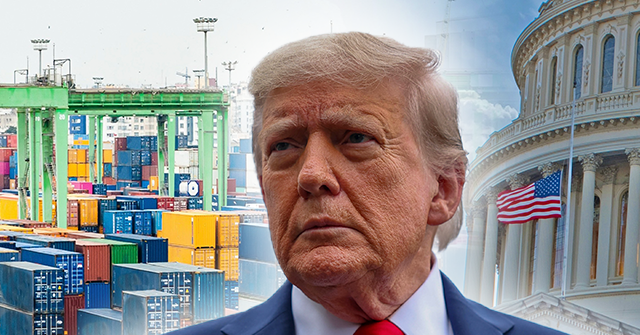How American Presidents Got the Tariff Groove On
For years, critics have warned that presidential use of tariff authority threatens the separation of powers. We heard it when Trump imposed duties on steel and aluminum and certain Chinese imports. We hear it again today, as he rolls out varying tariff rates on almost the entire world. The accusation is always the same: that the president is usurping Congress’s role over taxation and trade.
But this view misreads both constitutional law and political reality. The president’s authority to impose tariffs is not a constitutional accident. It is the lawful outgrowth of Congress’s deliberate decision to delegate. The legal framework is stable. The institutional logic is sound. And the political consensus—expressed through elections and legislative inaction—has ratified it.
Under Article I, Section 8, Congress holds the power to lay and collect taxes and duties. And it exercises that power regularly—on income, on capital gains, on corporate profits. But it does not legislate tariff schedules. It hasn’t done so in nearly a century. Instead, it has created a separate legislative track, one that assigns tariff action to the executive branch under broad and flexible statutes. The contrast is unmistakable: Congress writes the tax code; it leaves tariffs to the president.
Delegation, Not Abdication
Congress’s behavior isn’t incoherent. It reflects a constitutional structure that has evolved through use. Laws like the Trade Expansion Act of 1962 (Section 232), the Trade Act of 1974 (Section 301), and IEEPA (1977) don’t bypass Congress—they are acts of Congress, authorizing the president to act in circumstances where the national interest demands speed, unity, and discretion.
This is not a power grab. It is a functioning constitutional equilibrium—one built on legislative design, institutional prudence, and democratic endorsement.
When Congress directly set tariff rates in the early republic, it did so in a very different world. In the early 19th century, the United States imported mostly manufactured goods from a small group of industrialized nations—primarily Britain, France, and Germany. These countries had wage structures and levels of development broadly comparable to the U.S., making trade policy a relatively straightforward affair. But by the late 19th and early 20th centuries, America’s trading relationships had proliferated. Imports came from an expanding array of countries, across every continent, with vastly different labor conditions, subsidies, and trade policies. Tariff-setting was no longer a matter of adjusting a few lines of a schedule—it became an exercise in diplomacy, intelligence, and strategic coordination.
Congress could attempt to legislate this, but doing so would require an unthinkably large and slow process, exposing tariffs to political manipulation and diplomatic delay. The U.S. Harmonized Tariff Schedule includes over 17,000 distinct tariff classification codes, organized into 99 chapters covering everything from raw materials to high-tech components. Trade flows through hundreds of countries, each with its own industrial policies, state-supported competitors, or unfair practices.
Instead, Congress made a structural choice: delegate. It recognized that centralized tariff micromanagement was no longer practical in a globalizing world, and that the executive branch was better equipped to respond to real-time threats and opportunities. Delegation was not abandonment. It was a structural adaptation to complexity.
This growing complexity matters constitutionally. When trade was simple and bilateral, Congress could manage tariffs directly. But as foreign trade expanded, supply chains globalized, and industrial policy abroad became strategic, Congress restructured its role. It didn’t surrender power—it re-channeled it through statutory delegation, ensuring presidential flexibility in trade while concentrating its own energy on internal taxation.
Congress Reprioritized, Not Abdicated
The growth of global trade complexity didn’t just make tariff legislation unwieldy. It also coincided with—and likely drove—Congress’s fiscal shift from tariffs to internal taxation. In the 19th century, tariffs were the federal government’s primary revenue source. But by the early 20th century, as imports diversified and the domestic economy matured, Congress adopted personal and corporate income taxes as its new fiscal center of gravity.
What followed was not abdication, but a reprioritization of legislative focus. Congress redirected its institutional energy toward the Internal Revenue Code, where it remains deeply involved—setting rates, defining income, managing credits, and adjusting brackets. Tariffs, by contrast, were placed on a separate track: delegated to the president under broad statutory frameworks, precisely so Congress could focus on managing the increasingly complex internal tax base.
Demands that Congress reassert exclusive tariff-setting authority ignore this constitutional development. Worse, they defy Congress’s own express will—articulated repeatedly through statute and confirmed through decades of political practice. And, ironically, they would require a return to a world in which the U.S. had far fewer trading partners and imported far fewer goods.
Democratic Endorsement
Trump ran on tariffs in 2016, 2020, and 2024—and won. Congress has had the opportunity to rescind these delegations but hasn’t. The courts have upheld them. The public, meanwhile, has returned to office both the president and lawmakers who accept this framework. This is not a temporary deviation. It is a stable expression of democratic will, formalized by legislation, institutionalized by practice, and reaffirmed through elections.
The president’s tariff authority is not a loophole or a usurpation. It is a constitutionally sound expression of legislative intent, adapted to modern trade realities, and operating with popular support. Congress still holds the power. It has simply chosen to exercise it differently. It sets tax policy. It delegates tariff enforcement and tariff setting. And the president, acting under law, carries it out.
This isn’t a break from constitutional tradition. It is the tradition—updated for a more complex world, and still anchored in lawful governance and political legitimacy.


















